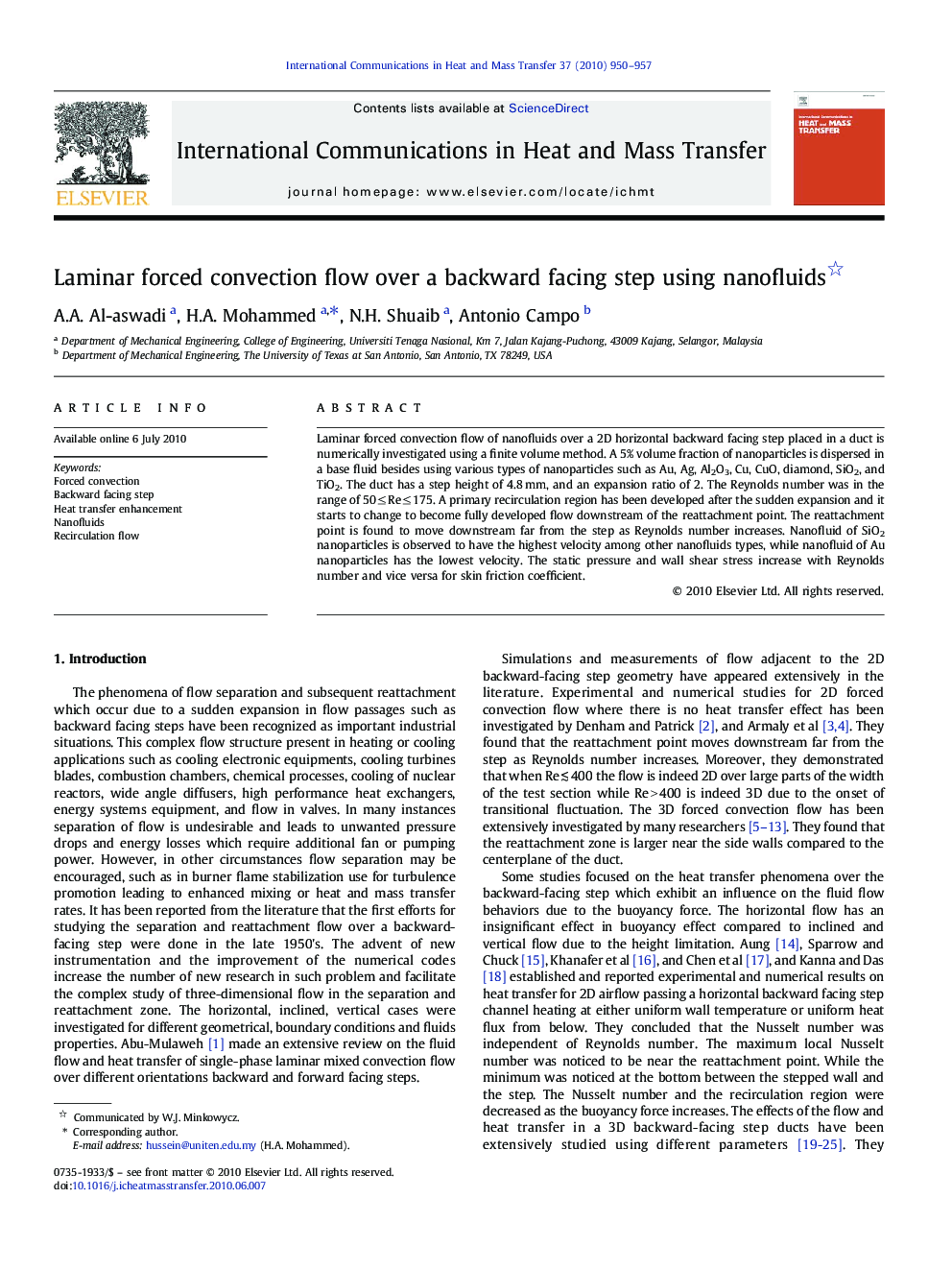| Article ID | Journal | Published Year | Pages | File Type |
|---|---|---|---|---|
| 653772 | International Communications in Heat and Mass Transfer | 2010 | 8 Pages |
Laminar forced convection flow of nanofluids over a 2D horizontal backward facing step placed in a duct is numerically investigated using a finite volume method. A 5% volume fraction of nanoparticles is dispersed in a base fluid besides using various types of nanoparticles such as Au, Ag, Al2O3, Cu, CuO, diamond, SiO2, and TiO2. The duct has a step height of 4.8 mm, and an expansion ratio of 2. The Reynolds number was in the range of 50 ≤ Re ≤ 175. A primary recirculation region has been developed after the sudden expansion and it starts to change to become fully developed flow downstream of the reattachment point. The reattachment point is found to move downstream far from the step as Reynolds number increases. Nanofluid of SiO2 nanoparticles is observed to have the highest velocity among other nanofluids types, while nanofluid of Au nanoparticles has the lowest velocity. The static pressure and wall shear stress increase with Reynolds number and vice versa for skin friction coefficient.
